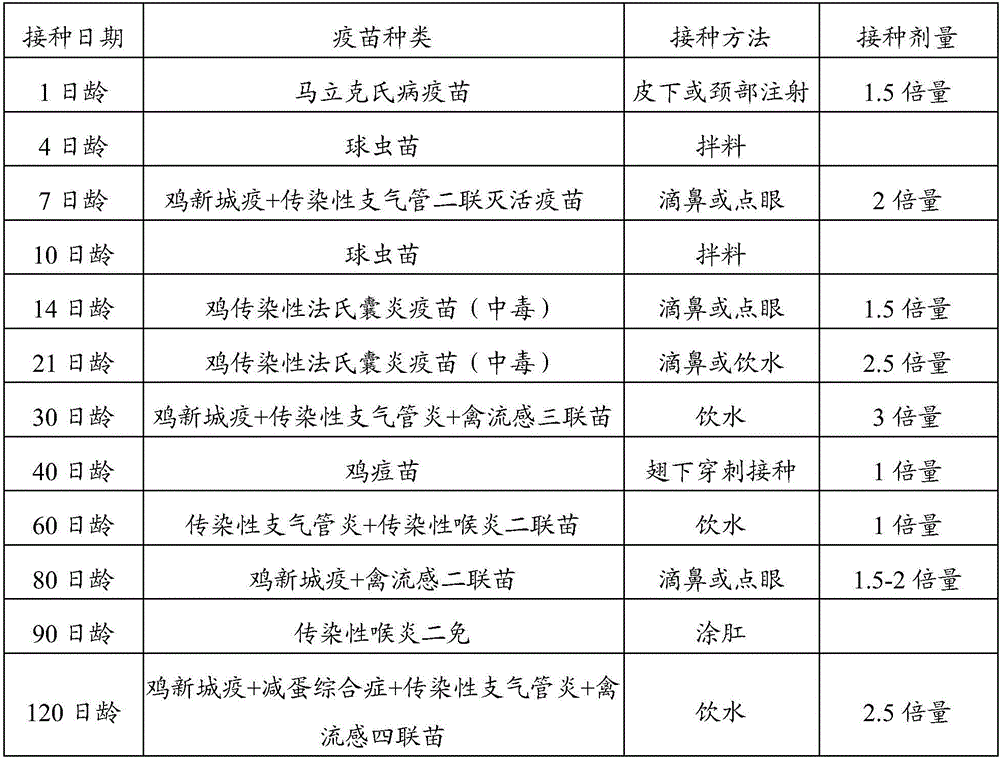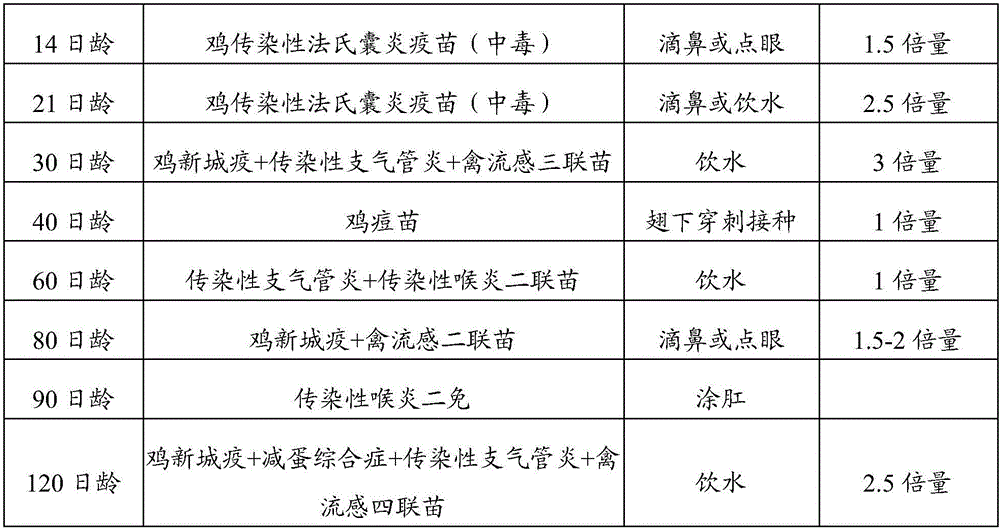Under-forest-based breeding method of laying hens
A breeding method and technology for laying hens, applied in the breeding field of laying hens, can solve the problems of unscientific stocking density, no rotation grazing system, single feed, etc., to ensure the ecological environment and sustainable development, optimize the immunization program, and improve the prevention and control. Effect
- Summary
- Abstract
- Description
- Claims
- Application Information
AI Technical Summary
Problems solved by technology
Method used
Image
Examples
Embodiment 1
[0062] A breeding method based on understory laying hens, comprising the following steps:
[0063] 1) Prepare high-quality laying hens under the forest for stocking:
[0064] Choose woodlands, grasslands, orchards, farmlands, etc. that meet the environmental quality standards for pollution-free food production areas, have natural barriers, no history of infectious diseases, no endemic disease, and are secluded, with clean air. The terrain is relatively high, with a slope of 15 degrees. Sunny, flat places with sufficient water sources and convenient power supply; away from main roads, villages and towns (residential areas), factories, schools and other livestock and poultry farms, especially livestock and poultry slaughterhouses, meat and livestock product processing plants.
[0065] 2) Choose layer hen houses based on the undergrowth: According to the actual situation of investment funds combined with the actual production situation, select different chicken houses for breedin...
Embodiment 2
[0102] In this breeding method, in step 5, the feed formula for laying chicks consists of the following components in parts by weight: 60 parts of corn, 6 parts of wheat bran, 22 parts of soybean meal, 2 parts of fish meal, 2 parts of rapeseed meal, 2 parts of calcium hydrogen phosphate 1 part, 1 part of stone powder, 0.5 part of table salt, 0.5 part of additive;
[0103] The feed formula for laying chickens consists of the following components in parts by weight: 65 parts of corn, 8 parts of wheat bran, 20 parts of soybean meal, 0.5 part of fish meal, 6 parts of rapeseed meal, 1 part of calcium hydrogen phosphate, 1.5 parts of stone powder, and 0.1 part of salt 1 part, 1.5 parts of additive, 1 part of cottonseed meal;
[0104] The feed formula for laying hens consists of the following components in parts by weight: 55 parts of corn, 5 parts of wheat bran, 18 parts of soybean meal, 3 parts of fish meal, 2 parts of rapeseed meal, 4 parts of cotton meal, 1 part of calcium hydrog...
Embodiment 3
[0107] In this breeding method, in step 5, the feed formula for laying chicks consists of the following components in parts by weight: 65 parts of corn, 2 parts of wheat bran, 28 parts of soybean meal, 1 part of fish meal, 4 parts of rapeseed meal, 1 part of calcium hydrogen phosphate 1 part, 2 parts of stone powder, 0.1 part of table salt, 1.5 parts of additive;
[0108] The feed formula for laying chickens consists of the following components in parts by weight: 60 parts of corn, 15 parts of wheat bran, 15 parts of soybean meal, 1.5 parts of fish meal, 2 parts of rapeseed meal, 1.5 parts of calcium hydrogen phosphate, 1 part of stone powder, and 0.5 parts of salt part, 0.5 part of additive, 3 parts of cottonseed meal;
[0109] The feed formula for laying hens consists of the following components in parts by weight: 60 parts of corn, 1 part of wheat bran, 22 parts of soybean meal, 1 part of fish meal, 6 parts of rapeseed meal, 2 parts of cotton meal, 1.5 parts of calcium hydr...
PUM
 Login to View More
Login to View More Abstract
Description
Claims
Application Information
 Login to View More
Login to View More - R&D
- Intellectual Property
- Life Sciences
- Materials
- Tech Scout
- Unparalleled Data Quality
- Higher Quality Content
- 60% Fewer Hallucinations
Browse by: Latest US Patents, China's latest patents, Technical Efficacy Thesaurus, Application Domain, Technology Topic, Popular Technical Reports.
© 2025 PatSnap. All rights reserved.Legal|Privacy policy|Modern Slavery Act Transparency Statement|Sitemap|About US| Contact US: help@patsnap.com



